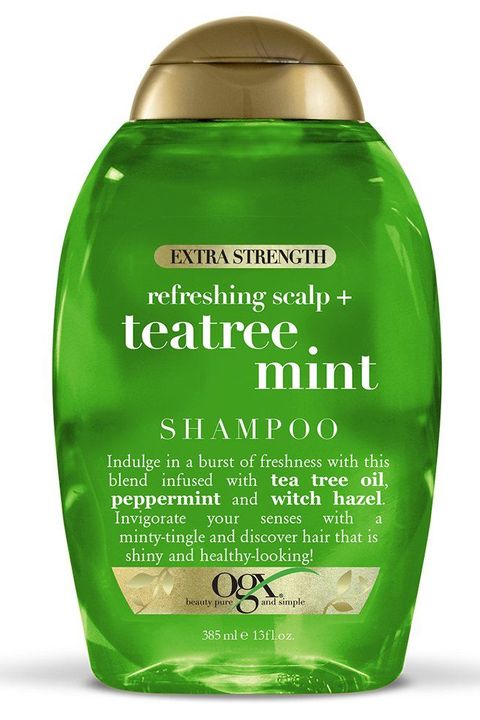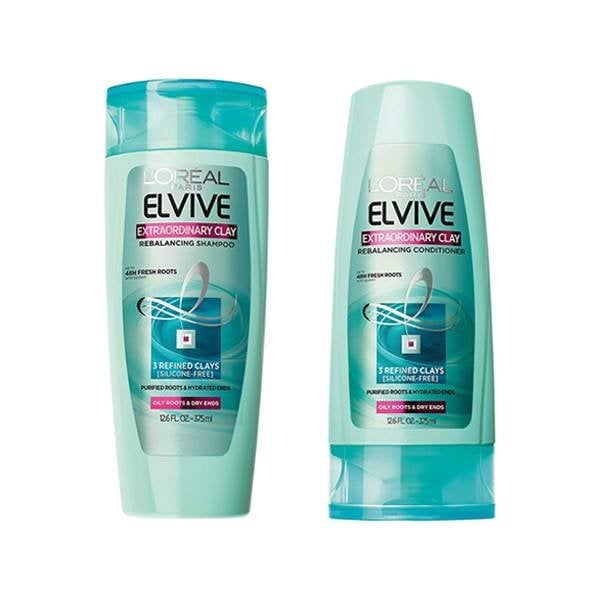Understanding Greasy Hair: Causes and Solutions
Greasy hair, also known as oily hair, is a common issue that affects many individuals. It occurs when the sebaceous glands in the scalp produce excessive sebum, which then accumulates on the hair strands, making them appear greasy and unappealing. To effectively manage greasy hair, it is essential to use the right shampoo and maintain a healthy scalp.
Various factors contribute to greasy hair, including overactive sebaceous glands, hormonal imbalances, and improper hair care. Overactive sebaceous glands can produce excess sebum, leading to greasy hair. Hormonal imbalances, particularly during puberty, pregnancy, or menopause, can also trigger increased sebum production. Furthermore, using hair care products that are too heavy or not washing your hair frequently enough can exacerbate the issue.
Using the right shampoo is crucial for managing greasy hair and maintaining a healthy scalp. Shampoos specifically designed for greasy hair contain ingredients that help regulate sebum production and deep clean the scalp. By incorporating the right shampoo into your hair care routine, you can effectively combat greasy hair and enjoy a healthy, balanced scalp.
Key Ingredients to Look for in Shampoos for Greasy Hair
When selecting a shampoo for greasy hair, it is essential to consider the ingredients that help combat excessive sebum production and deep clean the scalp. Here are some key ingredients to look for:
- Salicylic Acid: This beta hydroxy acid (BHA) is a popular ingredient in anti-dandruff shampoos. It helps exfoliate the scalp, removing dead skin cells and excess sebum, which can contribute to greasy hair.
- Tea Tree Oil: Derived from the leaves of the tea tree, this essential oil has antimicrobial and anti-inflammatory properties. It helps regulate sebum production, soothe the scalp, and promote a healthy scalp environment.
- Clay: Clay-based shampoos are excellent for absorbing excess oil and impurities from the scalp. They help deep clean the scalp, leaving it refreshed and balanced.
By incorporating these ingredients into your shampoo, you can effectively manage greasy hair and maintain a healthy scalp. Remember that the right shampoo, combined with proper hair care techniques and a balanced lifestyle, will contribute to long-term results.
Top Shampoo Recommendations for Greasy Hair
When it comes to managing greasy hair, there are several high-quality shampoo options available. These products are specifically designed to regulate sebum production and deep clean the scalp. Here are some top recommendations:
- Neutrogena Anti-Residue Shampoo: This clarifying shampoo removes up to 90% of residue buildup, leaving the scalp feeling clean and refreshed. It is gentle enough for daily use and suitable for all hair types.
- Paul Mitchell Tea Tree Special Shampoo: Infused with tea tree oil, peppermint, and lavender, this shampoo deep cleanses the scalp, leaving it invigorated and refreshed. It also helps regulate sebum production and soothes the scalp.
- Living Proof Perfect Hair Day (PHD) Shampoo: This innovative shampoo uses a patented Healthy Hair Molecule technology to cleanse the hair and scalp without stripping them of essential oils. It also helps control oil and sweat for up to 48 hours.
By incorporating these high-quality shampoos into your hair care routine, you can effectively manage greasy hair and maintain a healthy scalp.
How to Use Shampoo for Greasy Hair: Tips and Tricks
Using shampoo effectively is crucial for managing greasy hair and maintaining a healthy scalp. Here are some practical tips and tricks to help you get the most out of your shampoo:
- Proper Washing Techniques: Wet your hair thoroughly, then apply a small amount of shampoo to your scalp. Massage the shampoo into your scalp using circular motions, focusing on the areas where grease tends to accumulate. Avoid applying shampoo directly to the ends of your hair, as this can lead to dryness and split ends.
- Ideal Frequency of Hair Washing: Wash your hair every 1-2 days to prevent excess oil buildup. If you have very oily hair, you may need to wash it daily. However, avoid overwashing, as this can strip your scalp of essential oils and stimulate sebum production.
- Benefits of Using a Conditioner: While it may seem counterintuitive to use a conditioner on greasy hair, it can help maintain the overall health of your hair. Apply a lightweight conditioner to the ends of your hair, avoiding the roots, to keep your hair hydrated and manageable without weighing it down.
By following these tips and tricks, you can effectively use shampoo for greasy hair and maintain a healthy, balanced scalp.
Comparing Shampoo Formulas: Liquid vs. Solid
When selecting a shampoo for greasy hair, you may come across both liquid and solid options. Each type has its pros and cons, and understanding these can help you make an informed decision. Here’s a comparison of liquid and solid shampoo formulas for greasy hair:
- Liquid Shampoo: Liquid shampoos are widely available and come in various formulations designed for greasy hair. They are easy to use and can be found in most supermarkets and drugstores. However, liquid shampoos typically come in plastic bottles, contributing to plastic waste and environmental pollution.
- Solid Shampoo: Solid shampoos, also known as shampoo bars, are a more eco-friendly alternative. They are free from preservatives and packaging, reducing their environmental impact. Solid shampoos can effectively clean greasy hair, but they may not lather as much as liquid shampoos. Additionally, they may take some time to get used to, as they require a different washing technique.
Ultimately, the choice between liquid and solid shampoo for greasy hair depends on your personal preferences and priorities. Both types can be effective, so consider factors like convenience, environmental impact, and cost when making your decision.
Budget-Friendly Shampoo Options for Greasy Hair
Managing greasy hair doesn’t have to break the bank. There are several affordable shampoo options available for those on a budget. Here are some budget-friendly shampoo options for greasy hair, along with their key features:
- Suave Daily Clarifying Shampoo: This drugstore staple effectively removes buildup and excess oil from greasy hair. Its invigorating formula leaves hair feeling clean and refreshed without weighing it down.
- Vo5 Tea Therapy Clarifying Shampoo: Infused with tea extracts, this shampoo gently cleanses and purifies greasy hair. It helps balance sebum production and leaves hair smelling fresh and revitalized.
- Garnier Fructis Pure Clean Shampoo: Formulated with natural ingredients like lemon extract and green tea, this shampoo deeply cleanses greasy hair and removes impurities. It is gentle on the scalp and helps maintain the hair’s natural balance.
By choosing these budget-friendly shampoo options, you can effectively manage greasy hair without compromising your financial well-being.
Maintaining a Balanced Scalp: Additional Tips and Advice
In addition to using the right shampoo, there are several other tips and techniques to help maintain a balanced scalp and prevent greasy hair. Here are some recommendations to consider:
- Avoid Certain Hairstyles: Tight hairstyles, such as ponytails, braids, and buns, can put tension on the scalp and stimulate sebum production. Opt for loose hairstyles or let your hair down whenever possible to minimize excess oil production.
- Use Dry Shampoo: Dry shampoo is a great option for absorbing excess oil between washes. Sprinkle or spray dry shampoo on your roots, then brush it through your hair to distribute the product and refresh your style.
- Practice Stress-Reducing Techniques: High stress levels can contribute to hormonal imbalances and increased sebum production. Incorporate stress-reducing activities, such as meditation, yoga, or deep breathing exercises, into your daily routine to help maintain a healthy scalp and manage greasy hair.
By following these additional tips and advice, you can further support your efforts to maintain a balanced scalp and prevent greasy hair.
Long-Term Results: Managing Expectations and Staying Consistent
When it comes to managing greasy hair, it’s essential to understand that long-term results require patience, consistency, and a holistic approach. While some products may show immediate results, long-term management typically involves more than just using the right shampoo.
- Consistency is Key: Consistently using a high-quality shampoo formulated for greasy hair can help regulate sebum production and maintain a balanced scalp. Stick with a product for several weeks to see if it works for your hair type before making any changes.
- Proper Hair Care Techniques: In addition to using the right shampoo, it’s crucial to follow proper hair care techniques. This includes washing your hair regularly, avoiding over-manipulation, and using conditioner only on the ends of your hair to prevent weighing down your roots.
- Healthy Lifestyle: A healthy lifestyle can also contribute to a balanced scalp and manageable hair. Eating a well-balanced diet, staying hydrated, getting enough sleep, and managing stress levels can all help maintain a healthy scalp and prevent greasy hair.
By combining the right shampoo, proper hair care techniques, and a healthy lifestyle, you can effectively manage greasy hair and enjoy long-term results.








